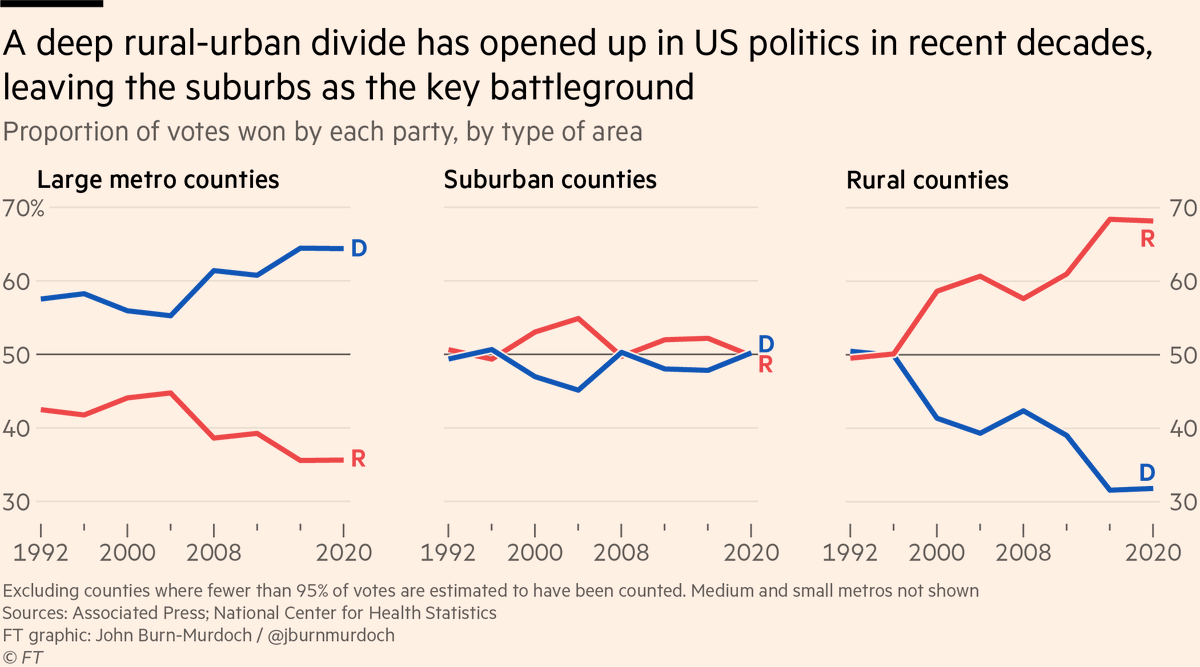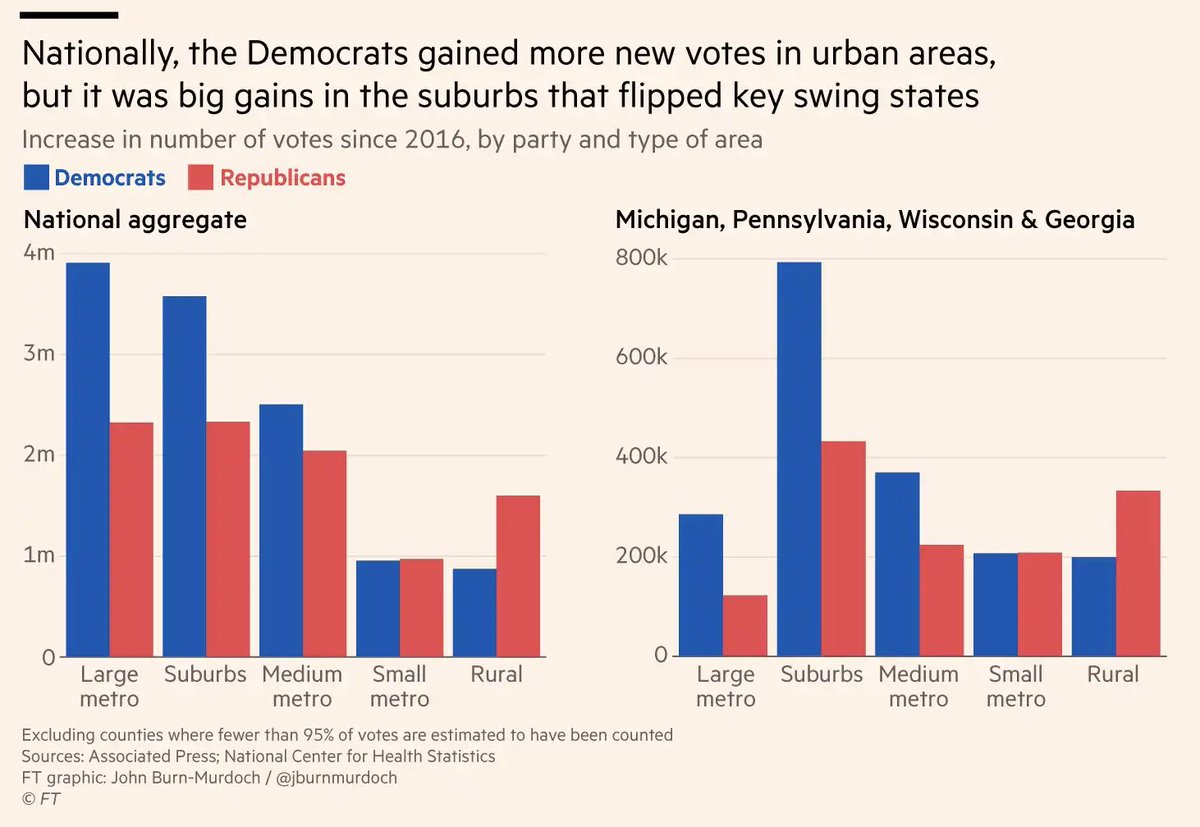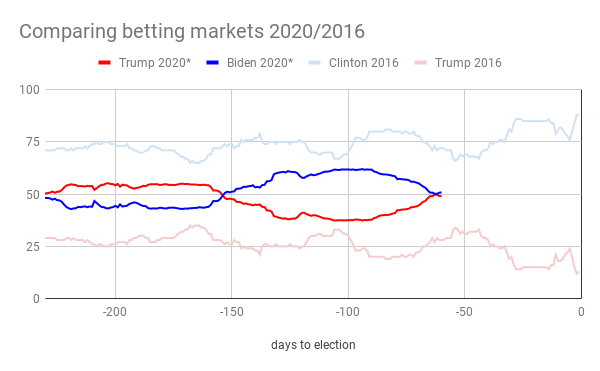
NEW: @Claire_Bushey & I analyzed allegations of police misconduct from three US cities (Chicago, NYC, Philly), and I have organized the #rstats DATA+CODE in a GitHub repo ⚡️⚡️⚡️
github.com/Financial-Time…
The @FT STORY:
ft.com/content/141182…
*THREAD* about the data
github.com/Financial-Time…
The @FT STORY:
ft.com/content/141182…
*THREAD* about the data
1/ To begin, here's an old-school chart from the Christopher Commission's independent investigation of the LAPD in 1991, after the police beating of Rodney King
The report found that the top 10% of officers w/misconduct complaints against them accounted for 28% of ALL complaints
The report found that the top 10% of officers w/misconduct complaints against them accounted for 28% of ALL complaints

2/ ... over a 4yr pd. 30yrs later, this overall pattern—which the Commission called "remarkable and disturbing"—still holds true today in Chicago, NYC, & Philly
The 10% of officers named most often in civilian complaints against police drew ~ a third of all the complaints
The 10% of officers named most often in civilian complaints against police drew ~ a third of all the complaints

3/ You might be wondering why we didn't include more cities, like Minnesota, where Derek Chauvin generated 17 complaints during his 19yrs on the force (1 led to discipline) before being fired & convicted for the murder of George Floyd
Answer: THE POLICE DON'T RELEASE THE DATA
Answer: THE POLICE DON'T RELEASE THE DATA
4/ Police misconduct & disciplinary records are *not* publicly available in most cities, and in Chicago+NYC, years-long court battles have ensued over this data. Our analysis for those cities was made possible by @invinst & @nyclu
cpdp.co
nyclu.org/en/campaigns/n…
cpdp.co
nyclu.org/en/campaigns/n…
5/ Note on NYC: in March the Civilian Complaint Review Board & NYPD released some complaints data (not as many fields as @NYCLU has)—*after* the Jun 2020 repeal of 50-A, a statute shielding officer records
www1.nyc.gov/site/ccrb/poli…
nypdonline.org/link/1026
nytimes.com/2021/03/08/nyr…
www1.nyc.gov/site/ccrb/poli…
nypdonline.org/link/1026
nytimes.com/2021/03/08/nyr…
6/ Another NYC note: @propublica also obtained data on civilian complaints from the CCRB; we used @NYCLU's since they included a broader subset (ProPublica's only has officers who had at least one substantiated complaint)
projects.propublica.org/nypd-ccrb/
projects.propublica.org/nypd-ccrb/
7/ Philadelphia, OTOH, is one of the few major cities in the country whose police department *does* release this data in a machine-readable format, on @opendataphilly
opendataphilly.org/dataset/police…
opendataphilly.org/dataset/police…
8/ One drawback is that Philly's data is released on a trailing basis, meaning older data is overwritten by newly-released data 😐😐😐
HT @sam_learner for sharing the data behind his amazing @puddingviz project so we could use info dating back to 2015 pudding.cool/2020/10/police…
HT @sam_learner for sharing the data behind his amazing @puddingviz project so we could use info dating back to 2015 pudding.cool/2020/10/police…
9/ That's why we chose Chicago, NYC & Philly for our story. So what does it mean for complaints to have such a skewed distribution? A couple of thoughts:
10/ First, is this proof of the "few bad apples" idea?
It's not that simple for a few reasons. Police, for their part, often counter that "problem officers" are actually "productive officers" — they work in most dangerous areas, make the most arrests, etc.
It's not that simple for a few reasons. Police, for their part, often counter that "problem officers" are actually "productive officers" — they work in most dangerous areas, make the most arrests, etc.
11/ Criminologist @RJohnkane disagrees, & says that "if you're going to contact 'risky people' on a regular basis, you should eventually become really good at it without generating complaints"
So from both these perspectives, the "bad apples" analogy is flawed
So from both these perspectives, the "bad apples" analogy is flawed
12/ Also, research from @_georgewood @droithmayr @AVPapachristos suggests that misconduct can spread—officers with high levels of complaints could draw colleagues into “misconduct networks”
Here's an example #dataviz from one police district in Chicago
journals.sagepub.com/doi/full/10.11…
Here's an example #dataviz from one police district in Chicago
journals.sagepub.com/doi/full/10.11…

13/ “The idea that it’s just ‘bad apples’ always forgets the rest of the analogy. Bad apples spoil the bunch,” said @AVPapachristos, adding that good as well as bad behavior can be transmitted within groups
14/ Second, only a tiny share of misconduct complaints (single digit %s, if that) resulted in discipline. Why?
There's lots to unpack here!
There's lots to unpack here!
15/ It's impt to note that we canNOT make *direct* comparisons between cities because each city records & investigates complaints differently, and the scope of the data obtained from each city is different as well
16/ I learned *a lot* about this, and have tried to document as much of it as possible in the GitHub repo for future researchers, including on this table
HT @anfan @invinst for answering a *deluge* of Qs about Chicago
github.com/Financial-Time…
HT @anfan @invinst for answering a *deluge* of Qs about Chicago
github.com/Financial-Time…

17/ In NYC, for instance, civilian complaints are investigated by the civilian complaint review board* but the police commissioner has the final say over discipline
*if they fall under certain categories (FADO: www1.nyc.gov/site/ccrb/abou…)
See: projects.propublica.org/nypd-unchecked… by @ericuman
*if they fall under certain categories (FADO: www1.nyc.gov/site/ccrb/abou…)
See: projects.propublica.org/nypd-unchecked… by @ericuman
18/ That's the case with most cities that have a civilian review agency — ultimately they make recommendations to the police dept, which decides whether & what discipline to impose
(In Philly, complaints are investigated by the police department's own internal affairs bureau)
(In Philly, complaints are investigated by the police department's own internal affairs bureau)
19/ Like I said, lots to unpack about the differences between different cities.
S/O to @TooMuchMe & the Badge Watch project w/ @CodeForMiami —an app & website that tracks Miami PD officer complaints
badgewatch.org
S/O to @TooMuchMe & the Badge Watch project w/ @CodeForMiami —an app & website that tracks Miami PD officer complaints
badgewatch.org
https://twitter.com/toomuchme/status/1293169933707358209
20/ We couldn't include Miami bc the scope of its data was too different from the other cities; however, a preliminary analysis found similar trends. For ex, one Miami officer has 40+ complaints!
21/ There are ~ a million things I want to explore in the data but wasn't able to, but maybe you can!
Pls check out our GitHub repo & LMK if you have Qs. My nerdy heart will rejoice to know that sharing the data & code has been useful 🤓
github.com/Financial-Time…
Pls check out our GitHub repo & LMK if you have Qs. My nerdy heart will rejoice to know that sharing the data & code has been useful 🤓
github.com/Financial-Time…
22/ *Extra* Another thing I've thought about *a lot*, from a philosophical standpoint, is whether this kind of skewed distribution is an inevitable ~ statistical pattern ~, like the bell curve for height or grades ...
https://twitter.com/PlutoEllis/status/1398285325567463428
23/ ... in other words, even if a police department significantly reduced civilian complaints, would the distribution still hold true in perpetuity, in the sense that there will always be these "problem" officers at the tail end? 🤔
24/ I spoke to experts about this, including @RJohnkane (who studied NYPD extensively with James Fyfe ojp.gov/pdffiles1/nij/…) & Prof William Terrill @ASUCrimJustice (who co-authored an 8-city examination of citizen complaints w/ Jason R Ingram journals.sagepub.com/doi/10.1177/10…)
25/ In some ways, the answer is "yes, the distribution will always be skewed". Think abt the 80/20 rule AKA the Pareto principle that "roughly 80% of consequences come from 20% of the causes" for example. There will prob always be some officers with a higher number of complaints
26/ But there's no reason to think the skew has to be *this extreme*. As @RJohnkane puts it, it is possible to change the shape of the curve ...

https://twitter.com/Titus_VIII/status/1398303209966419972

27/ *particularly* given the network aspects of misconduct. Because we can't assume cases are independent of each other, focusing on the "super-generators" of complaints could impact the organization at-large, he says.
related point by @Titus_VIII
related point by @Titus_VIII
https://twitter.com/Titus_VIII/status/1398303209966419972
• • •
Missing some Tweet in this thread? You can try to
force a refresh










